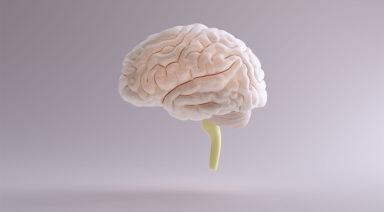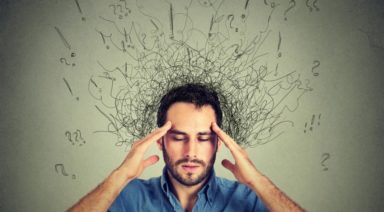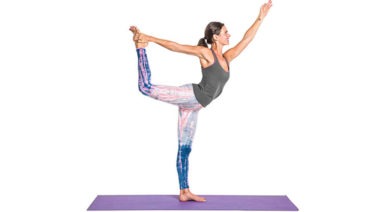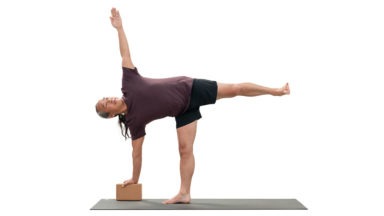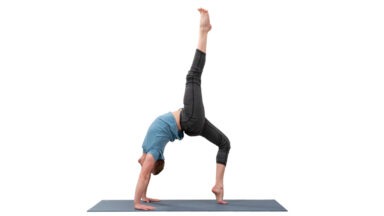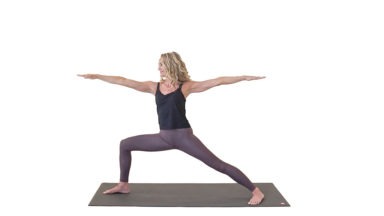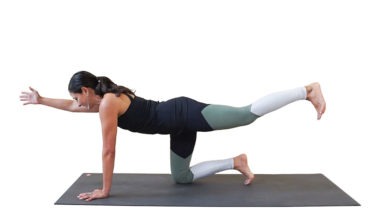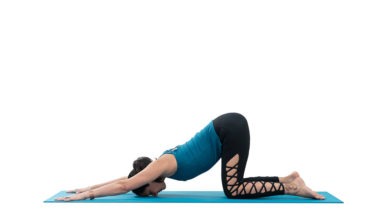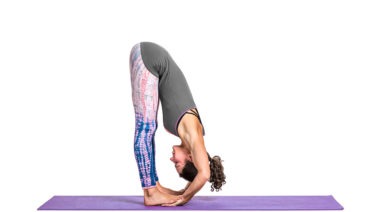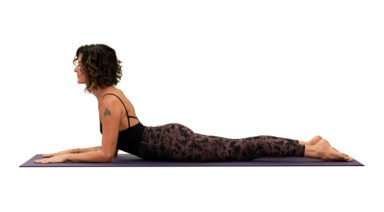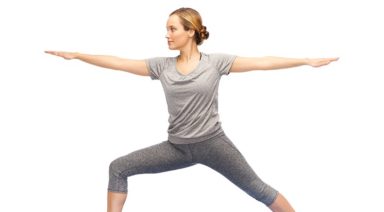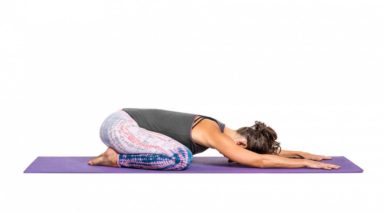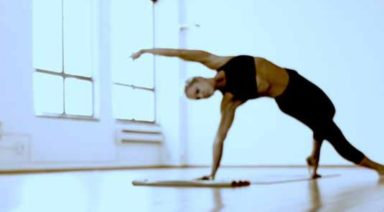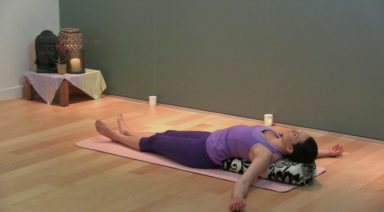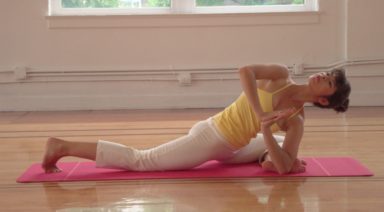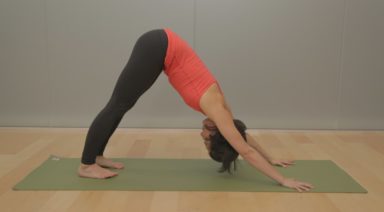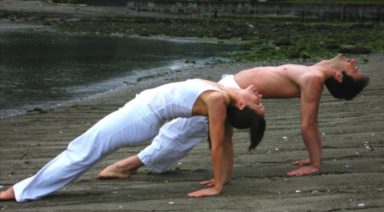5 Poses to Heal Emotional Pain and Calm the Mind

Yoga has been practiced for thousands of years to strengthen and unite the mind, body and soul. When the mind and soul become out of balance, the body is also affected. In turn, physical wellness can affect and strengthen a person’s mental wellness. The two are so interconnected that many doctors and therapists suggest exercise as a partial regimen for people suffering from anxiety and depression. However, those who are feeling depressed often find it difficult to begin an exercise routine as an unbalanced body and mind can feel listless and lack energy.
For those who are embarking on a journey of emotional or spiritual healing, yoga offers poses that can focus and calm your mind. These poses can be used as in-the-moment coping strategies to relieve anxiety or can be incorporated into existing routines for a maximum affect.
- Child’s Pose/Balasana**
It’s so easy, a child could do it! For those who are new to yoga, the child’s pose is an excellent introduction to the calming benefits of its poses. Usually, child’s pose is reserved as one of the last, tension-releasing poses of a yoga routine; but for someone who is struggling to regain physical control during a panic attack, child’s pose can bring a feeling of calm, comfort and focus. Focus on deep breathing.
- Easy Pose/Sukhasana**
Though simple, mental focus is required to maintain the posture and breathing of the pose, which makes it ideal for both preventative and coping routines for those who experience anxiety. Those who are feeling displaced or confused can mindfully use Easy Pose by envisioning the body as being rooted to the ground.
- Cat and Cow Pose/Marjariasana**
For the Cat/Cow to be effective, it is important to allow your mind to become completely absorbed in the tiny alterations taking place in your body’s energy while shifting between the two. Starting out on all fours, inhale while looking up toward the sky, opening the chest and heart. As you exhale, round your shoulders and hang your head between your shoulders. This is a revitalizing pose that will gently massage your lower back, which makes it perfect for anyone who feels fatigued or mentally clouded after a long day at the office.
- Locust Pose/Salabhasana (paired with Downward Dog/Adho Mukha Svanansana)**
The Locust Pose can be used to help assuage the effects of chronic depression and its effects on the body. The pose opens the heart, strengthens posture, revitalizes energy levels, aids in digestion and alleviates back pain. For someone who is feeling physical fatigue from emotion stress, Locust is a wonderful natural remedy.
To access the Locust Pose, lie prostrate on your mat with your hands by your side, palms up. On an exhale, lift your arms, chest, head and legs off the ground. Your palms can remain facing up, or you can clasp them together behind your back. If you have trouble lifting your arms, you can drop your palms to the mat and lift your chest, head and legs. (This is very similar to the Cobra pose.)Take care to keep your head in line with your neck. If your neck feels tense, try looking down.
The pose can be paired in a sequence with Downward Dog to heighten energy even further. To transition into Downward Dog, simply shift into table top, pressing through palms into the second pose on an exhaling breath. While inhaling, settle into Downward Dog. On the next exhale, come to the floor. Settle onto your mat on an inhaling breath, and lift into Locust during the exhale.
- Savasana
Each yoga routine should end in Savasana, also called the Corpse Pose, this pose requires no physical movement, but demands an intense mind-body connectedness. Lying on your back with palms facing down and eyes closed, simply focus on your breathing and your body. Now is the time to eliminate all muscle tension. Starting with the toes, focus your mind’s energy on completely relaxing each part of your body. Continue for as long as it takes for your body and mind to achieve a resounding calm. Then, begin testing your muscles as if for the first time, wiggling toes and fingers and eventually bending your knees to stand. This is especially helpful for those who awaken with panic attacks in the middle of the night or who have difficulty calming the mind at the end of the day.
How to Tell If You’re Being Controlled by Your Mind or Intellect
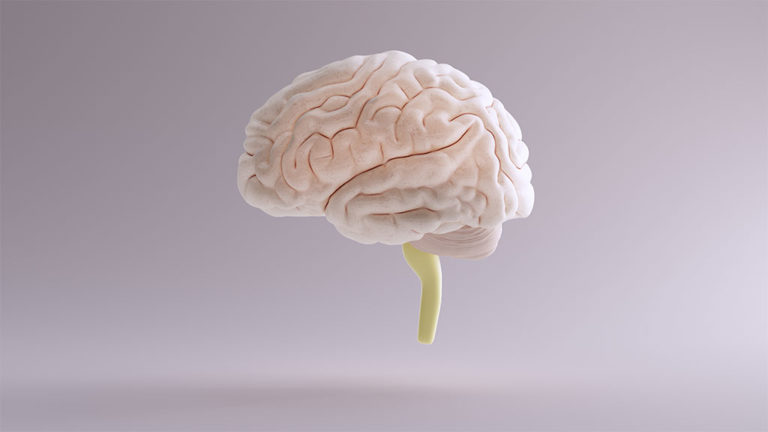
We make decisions every day. These decisions can fall under a few categories: ones we feel good about, ones we feel badly about, and ones that don’t make us feel anything.
The decisions we make can make our lives heaven or hell to live in because everything in this world is subject to the law of cause and effect, also known as the Law of Causation. We know what happens when we decide to drink too much alcohol one night. The next morning, we feel sick, tired, and most likely have a headache.
We won’t be able to function optimally and we suffer. Yet, even with this knowledge of the effect, people still decide to drink too much alcohol all too often. In order to understand why people do this to themselves, we have to break down the types of equipment we have as humans and better understand their functions. These understandings come from Vedanta: the ancient teachings of yoga as described in the Bhagavad Gita.
As humans, we are made up of matter and spirit. Spirit is the consciousness that gives rise to our matter. Spirit is your highest Truth. Without Spirit, there would be no matter. Our matter is comprised of three types of equipment; the body, the mind, and the intellect. The body is, of course, your physical manifestation with your organs, limbs, skin, bones, etc. This is what makes you tangible. Your mind is defined by Vedanta as the home of all your emotions like love, hate, anger, jealousy, joy, etc. It is also the home of your desires, likes, and dislikes.
Your mind is where your preferences live. And lastly, your intellect, your third and most important equipment is your ability to be objective and discern what is truth and what isn’t true based on knowledge and wisdom. Your intellect is the mature reasonable part of you that can question and think for itself when there’s adversity and when others are imposing their opinions and ideas on you. Your intellect stays centered regardless of the chaos happening externally.



